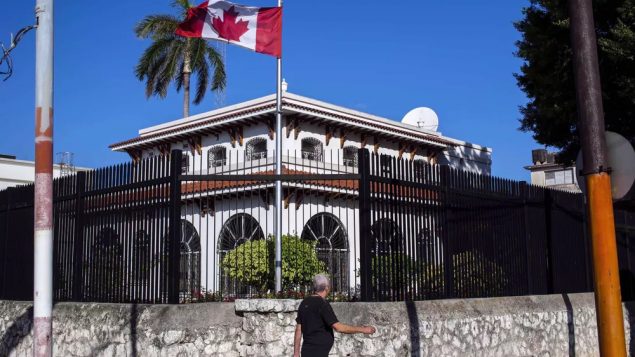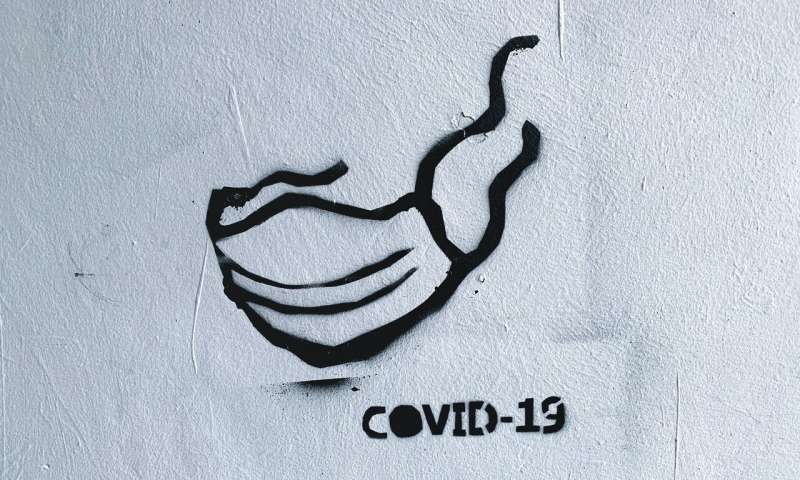“One would think the top priority would be to find out what it is that is potentially putting all of our international staff everywhere in the world at risk and defend against it."
Author of the article: Elizabeth Payne
Publishing date: Aug 25, 2021 •

A high-ranking Canadian diplomat in Cuba was flown home for assessment this year after experiencing an attack consistent with Havana syndrome.
The February 2021 incident is the most recent evidence that mysterious neurological symptoms continue to affect Canadian diplomats in Cuba, even as the government suggests the attacks have stopped.
The diplomat is the latest to join a $28-million lawsuit against the Canadian government. He accuses it of trying to “sweep things away quietly and carry on as if there is nothing to see here. What is being done is simply not good enough.”
He spoke to the Citizen on the condition of anonymity.
The latest Canadian case comes amid growing reports of Havana syndrome affecting U.S. personnel around the world. This week, during a trip through Asia, U.S. Vice-President Kamala Harris’s flight to Vietnam was delayed amid a report that two U.S. diplomats there had been evacuated following incidents alleged to be Havana syndrome. U.S. investigations have concluded Havana syndrome was the result of targeted energy attacks.
Before his posting, the Canadian diplomat was sent to Dalhousie University’s Brain Repair Centre in Halifax, where he underwent tests on his brain and cognitive functions. Baseline testing is now routine for Canadian diplomats heading to Cuba since Canadian diplomats experienced concussion-like symptoms of Havana syndrome beginning in 2017. The pandemic and other issues meant testing on his ears and eyes could not be completed.
The diplomat was assured there was no reason to worry; there had been no confirmed cases of Havana syndrome involving Canadian diplomatic staff in Cuba since 2018.
“I thought, all right, then things are fine. It has been almost three years since things happened. There is no apparent reason for concern.”
But, once he was there, things looked different. The first time he met his colleagues, at a Christmas party, one made a comment about his own Havana syndrome incident in 2019. And then the diplomat began hearing about other “incidents” involving consular staff since 2018, none of which was recognized as a confirmed case of Havana syndrome by the department of Global Affairs Canada.
“I had no idea. The department did not tell me about them.” The diplomat said he began feeling that the department of Global Affairs “had been withholding and hiding information and being rather dishonest about the reality there and the risks.”
He spent part of his posting in Cuba trying to get more information about what had been going on and how it was being managed, including trying to clarify what constituted a confirmed case of Havana syndrome as opposed to an incident.
That came to a stop at 8:15 a.m. on Feb. 19.
He was in the bathroom of his quarters before work when his right ear suddenly began reverberating. “It was like a ringing, but there was no sound.” It lasted about a minute, then stopped. He raced to the front door to see if anyone was outside. He saw no one.
His symptoms worsened over the following days. Sounds were distorted, he experienced an echoing in one ear along with ear pressure and acute pain. He developed headaches and concussion-like symptoms. The headaches and pain in his ear and right side of his head became worse. Within days he was flown out of Cuba and was on his way to Halifax for assessment.
He again underwent testing. He was unable to complete a balance test without tipping over and doctors saw inconsistency in his brain waves. But, in the end, they were unable to make a determination about whether it was a case of Havana syndrome. They obtained some more information, and the diplomat is still waiting for an answer.
He has no doubt that it was Havana syndrome.
In the meantime, he sought out a physiotherapist who treated what he diagnosed as a percussive force such as a targeted energy device that had likely hit the diplomat behind the right ear. The treatment significantly reduced his symptoms, but symptoms including vertigo and vision issues continue to emerge.
The diplomat said the message he received from colleagues when he arrived in Cuba was: “We are all on our own, so take care of yourself because Global Affairs is not going to.
“It is a perfect storm of privacy, security and bureaucratic inertia all coming together to make sure things don’t happen.”
Lawyer Paul Miller, who represents the diplomats and families suing the government for $28 million, says the latest case mirrors those experienced earlier by Canadian and U.S. diplomats in Cuba who were diagnosed with Havana syndrome.
“There is no other explanation for it, considering he can identify the time and date of the attack and the symptoms are the same as every other case.”
The injuries in Havana syndrome have been described as concussion-like, but without physical trauma.
The U.S. has launched multiple investigations into the incidents that some have concluded were likely caused by attacks using radio frequency energy, such as microwave radiation.
But, since the initial cases were reported, the Canadian government has been quiet about any additional cases involving staff. This spring, the government held a briefing to talk about plans to expand its diplomatic footprint in Cuba after it reduced staff following the incidents, according to former diplomats.
Those who experienced Havana syndrome accuse the federal government of suppressing information about it. They say 25 additional people have been evaluated for possible brain injury since the initial cases.
The diplomats and families who suffer hearing, cognitive and balance issues among other things are suing the federal government, claiming it failed to protect them or take proper action to treat them and their families. Some say they feel like they have been abandoned.
The federal government is fighting the lawsuit.
“The lack of care, the lack of support from the government has been disgraceful,” Miller said. “They are throwing these people under the bus.”
In a statement, Global Affairs Canada spokesperson John Babcock said the “health, safety and security of our diplomatic staff and their families is a priority.
“Global Affairs Canada takes seriously any potential risk to their safety. Global Affairs Canada maintains a strict security protocol to respond immediately to any unusual events affecting Canadian diplomats or their families posted abroad.”
The Canadian government has said it is continuing to investigate the cause.
The diplomat says that should be a priority.
“One would think the top priority would be to find out what it is that is potentially putting all of our international staff everywhere in the world at risk and defend against it. Instead, they are choosing to leave their people to fend for themselves. Why?”
epayne@postmedia.com
CDC Report on the ‘Havana Syndrome’: Medical Mystery ...
2021-02-02 · Havana Syndrome Among Canadian Diplomats: Brain Imaging Reveals Acquired Neurotoxicity Dalhousie University, Department of Medical Neuroscience and Pediatrics, Faculty of Medicine and the Brain Repair Centre September 2019 Related Links. Medical Records Can’t Explain “Havana Syndrome," A Buried CDC Report

The Canadian embassy in Havana is seen in 2018. Both U.S and Canadian officials reported strange health symptoms somewhat similar to concussions starting in late 2016. (Canadian Press)
‘Havana syndrome’: Diplomats in Cuba likely victims of ‘pulsed’ microwaves
It was a mysterious illness that struck Canadian and U.S. diplomats and some family members last year while they were posted to Cuba. It became known as the “Havana syndrome”. People reported suffering from headaches, nausea, dizziness, difficulty concentrating and other symptoms beginning in late 2016. Some also reporting hearing a buzzing or high pitched sounds. Some American diplomats in China reported similar symptoms
U.S embassy staff were greatly reduced as a result but no-one was able to explain what was going on or why. Staffing at the Canadian embassy was reduced at a later date.
Investigations by officials were carried out but could not initially determine a cause. A Canadian report in September 2019 suggested that it may be the result of pesticides used to fumigate against mosquitoes. Concern over mosquitoes carrying the Zika virus was high at the time with a campaign of fumigation being carried out,
However, a new American study however suggests a more technological cause, that of “directed, pulsed radio frequency energy”.
The report from the U.S National Academies of Sciences, Engineering and Medicine (NAS) suggests in conclusion that, “After considering the information available to it and a set of possible mechanisms, the committee felt that many of the distinctive and acute signs, symptoms, and observations reported by state department employees are consistent with the effects of directed, pulsed radio frequency energy,”
No source of such possible energy, nor who may have been behind it was identified but the report noted that based on western and Soviet studies going back several decades indicate there is circumstantial evidence for the pulsed energy cause.
The report suggested that the U.S. should take several precautions against possible future situations like this while noting, “Even though it (the committee) was not in a position to assess or comment on how these [Department of State] cases arose, such as a possible source of directed, pulsed RF energy and the exact circumstances of the putative exposures, the mere consideration of such a scenario raises grave concerns about a world with disinhibited malevolent actors and new tools for causing harm to others”,
It did not entirely rule out psychological and social factors as exacerbating or as possible contributions to the symptoms in some cases.
It did rule out the theory of pesticide contamination as the cause for the American diplomats, but did suggest that might also have contributed to the symptoms.
The report concerned only U.S. embassy personnel.
A group of five Canadian diplomats and their families is suing the Canadian government saying the Canadian government kept its staff ‘in harm’s way’ while American staff were being evacuated. A lawyer for the group said the Americans did not interview any of the Canadians during their investigation. The lawsuit is still before the courts
Additional information-sources
- BBC: Dec 6/20: Havana syndrome: likely caused by directed microwaves – US report
- Canadian Press (CTV): L Berthiaume: Dec 5/20: Report says U.S. diplomats likely targeted in energy attack, unsure about Canadians
- The Guardian (Uk) S Jones: Dec 6/20: Havana syndrome directed radio frequency likely cause of illness – report
- The Guardian (UK): I Sample: Nov 17/20: U.K. diplomatic cables shed light on Cuba sonic attacks scare
- CBC: Chartrand/Movilla/Ellenwood:Sep 19/19: Havava syndrome: Exposure to neurotoxin may have been cause, study suggests

